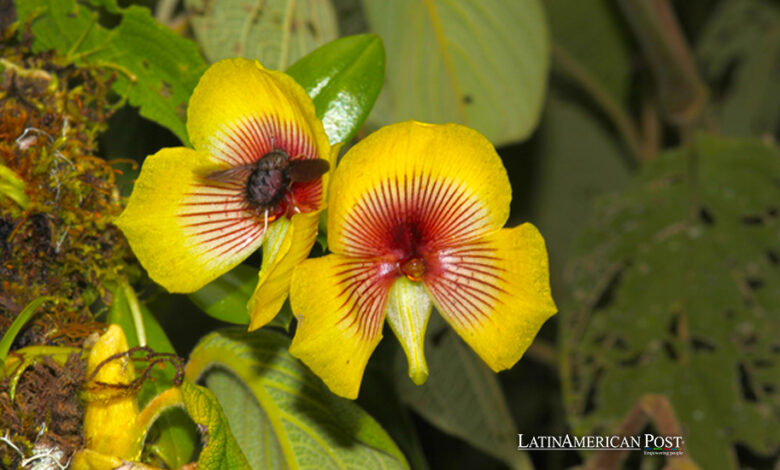A New Species of Orchid Discovered in Ecuador

“Telipogon pillaropatatensis” is the name of the new species of orchid described by several researchers and named in honor of the Ecuadorian cantons of Píllaro and Patate, the National Institute of Biodiversity (Inabio) reported this Wednesday.
Researchers and Collaborators
The researchers belong to the University of Las Américas (UDLA), Calaway Dodson Scientific Group, EcoMinga Foundation, Inabio, Trait Diversity and Function and Pontificia Universidad Católica de Perú near the Llanganates National Park (PNL), central-eastern Ecuador.
According to the researchers, Gabriel A. Iturralde, Marco F. Monteros (associated with Inabio), Marco M. Jiménez, Carlos Martel and Luis E. Baquero, the new species is morphologically similar to T. octavioi.
However, it differs by having a corolla with thick longitudinal lines without reticulations and a column with three dense tufts of setae of equal size.
Phylogenetic Relationships and Curiosities
Likewise, according to phylogenetic analyses carried out by the researchers, it is suggested that both species are not closely related and, curiously, among the taxa analyzed, T. pillaropatatensis seems to have a closer phylogenetic relationship with the very different T. pulcher and T. Hausmannian.
Like most Ecuadorian Telipogon species, T. pillaropatatensis shows sympodial growth with short, flattened stems, ancipitates at the base, inflorescences and pyramidal ovary.
When exposed to sunlight, a silvery reflection is produced in the corolla of the flowers, an optical effect that is attributed to the papillated epidermis, details Inabio in a statement.
Tribute to Píllaro and Patate
This species, he explains, is named in honor of the cantons of Píllaro and Patate, in the province of Tungurahua, “so that its inhabitants feel inspired and proud to protect the last remnants of the nearby high Andean forest where this beautiful orchid lives.”
Telipogon is a diverse genus of neotropical orchids encompassing approximately 240 species ranging from Mexico, Antilles, Central America, and the Andes, from Venezuela to Bolivia.
The genre is particularly diverse in Colombia, Ecuador, and Peru.
Also read: River turtle populations increase thanks to the community in Ecuador
The Ecuadorian Andes are one of the centers of diversity for these orchid species and, for example, Llanganates National Park has served as a key area for biological research in Ecuador, leading to the description of numerous species.
“Therefore, it is considered an important center of plant endemism within the eastern mountain range,” the writing concludes.





